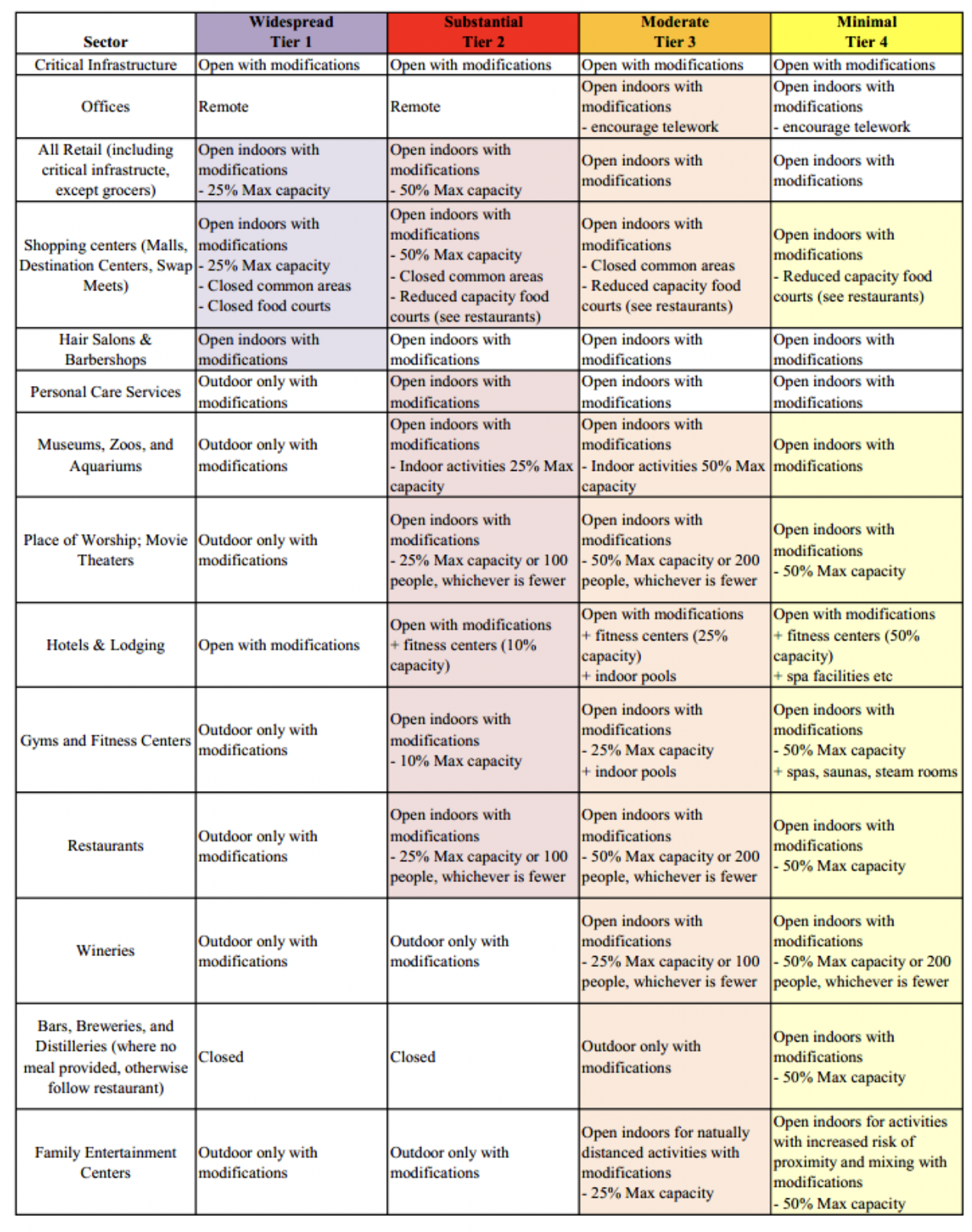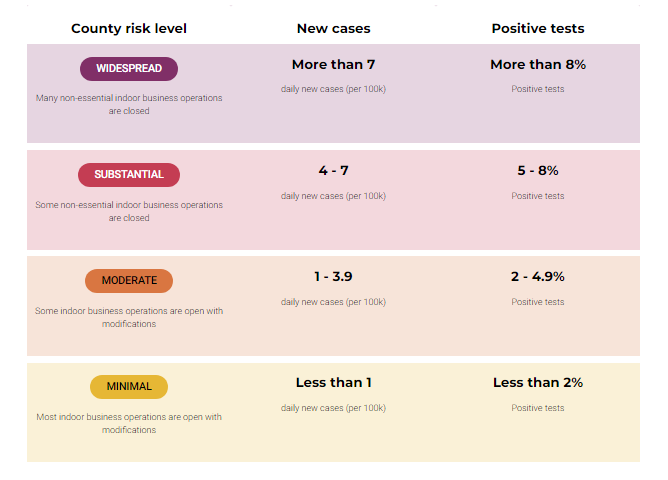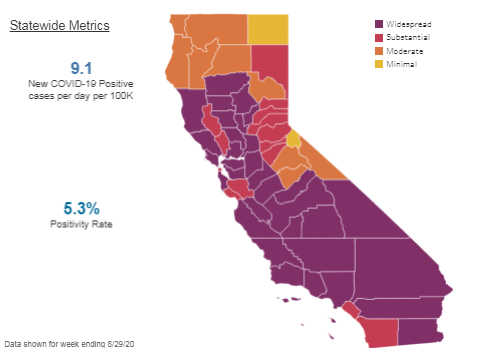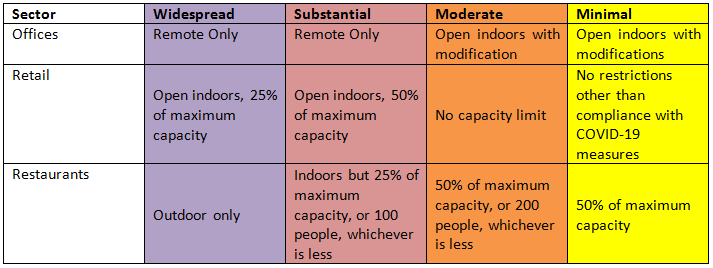Insights
Back to Work: California’s Blueprint for a Safer Economy
Sep 08, 2020Summary
On August 28, 2020, Governor Gavin Newsom unveiled a new plan for the reopening of California’s economy following the closures ordered in response to the COVID-19 pandemic, which replaced the county watch list system that was previously in effect. The new plan provides for a four-tier system in which counties must show consistent progress in reducing the transmission of the coronavirus before allowing for greater flexibility in the reopening of businesses, schools, and resuming group activities. The stated intent of the plan is to be “statewide, stringent and slow,” and to impose uniform limits on what businesses can be open depending on a county’s infection rates.
On August 28, 2020, Governor Gavin Newsom unveiled a new plan for the reopening of California’s economy following the closures ordered in response to the COVID-19 pandemic, which replaced the county watch list system that was previously in effect. The new plan provides for a four-tier system in which counties must show consistent progress in reducing the transmission of the coronavirus before allowing for greater flexibility in the reopening of businesses, schools, and resuming group activities. The stated intent of the plan is to be “statewide, stringent and slow,” and to impose uniform limits on what businesses can be open depending on a county’s infection rates.
As of September 8, 2020, nearly one-half of California’s counties are in the most restrictive tier.
What are the tiers, and how do counties progress through them?
Each county’s tier is currently assessed based on two metrics: (i) Adjusted Case Rate and (ii) Testing Positivity Percentage. The Adjusted Case Rate is based on the 7 day average number of cases per 100,000 people during the 7 day trailing period. The Testing Positivity Percentage is based on the percentage of positive tests in the county during the 7-day trailing period. The state is also expected to add a third criteria requiring the county to satisfy certain health equity measures including data collection, testing access, contact tracing, supportive isolation, and outreach that demonstrates a county’s ability to address the most impacted communities within a county.
To progress to a less restrictive tier, a county must have (i) been within its current tier for a minimum of three consecutive weeks, and (ii) met the criteria for the less restrictive tier for the prior two consecutive weeks.
A county can also regress to a more restrictive tier if such county’s adjusted case rate and/or test positivity has been within a more restrictive tier for two consecutive week periods. In connection with such regression, the applicable county will have no more than three days to implement any sector changes or closures.
What does this mean for California Businesses?
The table below provides a detailed description of how businesses are allowed to operate in each tier. Highlights include:
What can California businesses do to continue operating and minimize their risk?
Businesses in California should determine what tier their county falls under, and evaluate whether they need to modify their operations in response to the restrictions in the new statewide plan. Regardless of whether a business is reopening or continuing to operate, it should also (1) review the state’s Employer Playbook, (2) comply with the reopening guidance for its specific industry, (3) conduct a risk assessment, and develop a COVID-19 Response Plan for each worksite, retail location, office, or other place of business, (4) train employees, (5) implement screening, disinfection, and distancing protocols, (6) require face covering subject to certain exemptions, and (7) post a checklist of all of the above at its facilities.
We will continue to provide updates as the state clarifies and adds to the criteria and guidance under the new reopening plan. Should you have specific questions or like additional guidance to ensure compliance with the evolving re-opening requirements, please feel free to contact Tom Lee, Dylan Kornbluth, or the COVID-19 Reopening Team.

Related Practice Areas
-
Regulation, Compliance & Advisory
-
Employment & Labor
-
Environment
-
Real Estate
-
Restaurant Practice
-
Retail & Consumer Products






